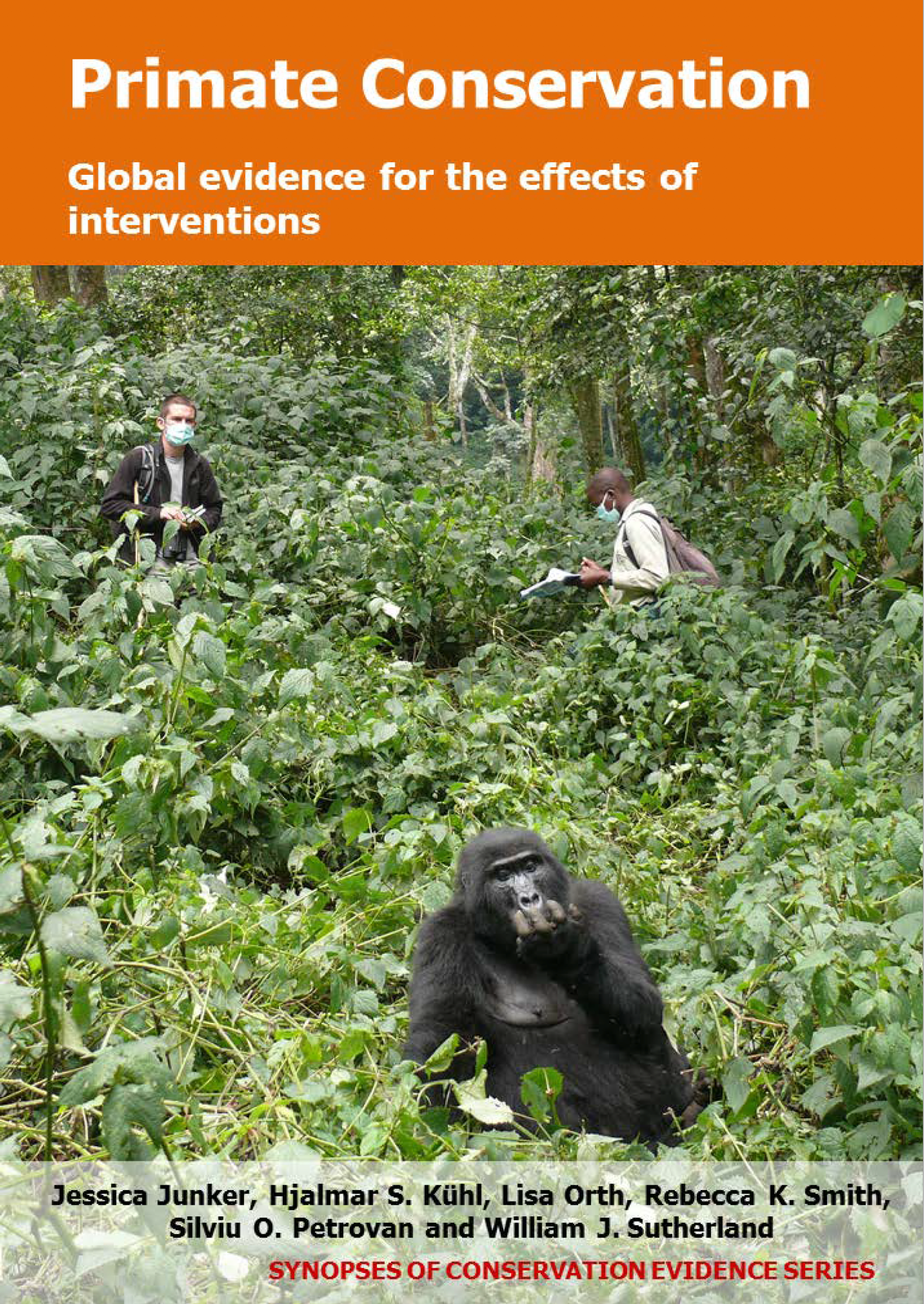Implement local no-hunting community policies/traditional hunting ban
-
Overall effectiveness category Likely to be beneficial
-
Number of studies: 5
View assessment score
Hide assessment score
How is the evidence assessed?
-
Effectiveness
60% -
Certainty
40% -
Harms
0%
Study locations
Supporting evidence from individual studies
A review on the status of grey snub-nosed monkeys Rhinopithecus brelichi in 1962-1977 in tropical montane forest in Fanjingshan Nature Reserve, China, which is sacred to pilgrims, found that very few individuals (<1 individual annually) were killed or captured by humans. Because the area is sacred, it is forbidden to kill wildlife there. The recorded cases show that four individuals were killed in 1962, one trapped in 1964, one caught alive in 1967, one killed in 1969, one caught alive in 1970, two killed in 1975, and three trapped in 1977. The trapped animals were caught in traps meant for other animals and the killed or captured animals were crop raiders which had come down to the villages located in the valley.
Study and other actions testedA controlled study in 1984-1987 in tropical lowland forest in the Masisi Highlands in Democratic Republic of Congo found that a small eastern lowland gorilla Gorilla beringei graueri population had increased after the implementation of a local gorilla hunting ban. The population increased and by 1987 there were 70 gorillas living in a 30 km2 area inhabited by between 5,000-10,000 people. However, population size before the ban was not reported and no statistical tests were carried out to determine whether this difference was significant. The owner of a cattle ranch had implemented the ban and encouraged the local people to do adhere to it. Gorillas nested as close as 30 m from houses and regularly crossed fields of beans or maize without feeding on them. In addition, they were observed in pastures among cattle and seen to eat the bark of Eucalypt trees. They become partially habituated to humans and as a consequence, could easily be observed.
Study and other actions testedA before-and-after trial in 1992-1994 in tropical forest in Cockscomb Basin Wildlife Sanctuary in Belize found that the black howler monkey Alouatta pigra population that was reintroduced into an area where hunting was largely controlled along with other interventions, showed an increase in size over time. The population increased from 62 in 1994 to >100 individuals (61% increase) in 1997. No statistical tests were carried out to determine whether this difference was significant. One-month-, 6-month-, 1-year, and 2-year survival rates for the different cohorts released in the dry seasons of 1992, 1993, and 1994, was 100%, 92%, 81%, and 86%, respectively. Birth rate was 20% (n=12) and infant survival rate was 75% (n=9). Entire social groups were reintroduced at once, and ten of the 14 groups were held in cages for 1-3 days before release within 700-1000 m to the neighbouring troop. All individuals were permanently marked, and adults were fitted with telemetry collars. The local community was educated about the reintroduction project and black howler conservation by implementing multimedia campaigns. The study does not distinguish between the effects of the different interventions mentioned above.
Study and other actions testedA before-and-after study in 1971-2002 in tropical montane forest in Bakossiland, Cameroon found that a drill Mandrillus leucophaeus population that was protected by a local hunting ban since 1994 along with other interventions, increased in size by 1997. However, the authors did not provide information on the magnitude of the population increase. Drill group sizes did not change over time, season, habitat, or elevation. Hunting was intense before 1994. For example, 103 adults were shot by two hunters on three occasions in 1990. After 1994, hunting was controlled and the first six drills were killed in 2002. In 1997, a group of 400 drills was observed and since the year 2000, wildlife staff and villagers regularly reported direct drill observations in the area. The drill hunting ban was initiated by the late Paramount Chief of Bakossi and subsequently supported by other Bakossi traditional chiefs. In addition, an education programme was initiated in 1992. Independent direct observations of drill groups and their size were recorded by different organizations working in the area. The study does not distinguish between the effects of the different interventions mentioned above.
Study and other actions testedA study in June-July 2010 in heavily degraded tropical forest in Lagwa and Akpugoeze communities in Igboland, southeastern Nigeria found that Sclater's monkey Cercopithecus sclateri in both communities in which the species was informally protected by taboos, increased in numbers from 124 to 206 (66% increase) and from 193 to 249 (29% increase) individuals over four years. Average group size increased from 8.3 to 10.8 individuals in Lagwa and from 9.2 to 13.8 individuals in Akpugoeze. Proportion of dependent infants also increased from 12 to 18% in Lagwa and from 8 to 11% in Akpugoeze. Last, numbers of observed monkey groups increased from 15 to 19 in Lagwa, but decreased from 20 to 18 in Akpugoeze. However, no statistical tests were carried out to determine whether these differences were significant. Total counts of groups and numbers of monkeys in each group were conducted using direct observations over a time period of less than two weeks in each community.
Study and other actions tested
Where has this evidence come from?
List of journals searched by synopsis
All the journals searched for all synopses
This Action forms part of the Action Synopsis:
Primate Conservation
Primate Conservation - Published 2017
Primate Synopsis





)_2023.JPG)














